OVERVIEW
Japan is the 2nd largest music market in the world. But 63% of revenue still comes from physical sales.
I was part of an ambitious project to unlock new experiences tailored to audiences in- Japan, by crafting social contexts in which music consumption gains meaning and value within the Spotify platform.
SCOPE
- User Research
- Prototyping
- User Interface Design
TOOLS
- Figma
- next.js
Sorry! This project is under NDA.
If you wish to view it, please enter the password:

CONTEXT
Spotify is looking to differentiate their offering and accelerate stick user growth with new & existing music streamers in Japan.
GOAL
Out of the Total Available Market, Spotify only takes up a small fraction of users. Our goal is to increase Subs/Monthly Active Users to 40 in Japan by 2025.
The challenge
A Distinct Market
In Japan, Spotify is viewed merely as a basic utility with limited offerings.
Japan is distinct from other markets. There is specific cultural value placed on restricted items and the desire to be acknowledged as a fan. Exclusivity in Japan isn’t limited to content — it also taps into the desire for unique and special things.

FOUNDATIONAL RESEARCH
Offerings for Fans
We conducted research amongst fervent artists, independent devotees, everyday music lovers and active members of fan communities — to understand how fans navigate Japan’s unique music scene. We identified fandom as the single largest opportunity for premium growth for the following reasons:
Widespread demand
● Fandom isn’t a niche interest - it’s deeply ingrained in people’s everyday lives.
● 62% of Japanese consumers with an audio interest are regularly engaging in fan activities.
High willingness to pay
● Fans’ willingness to pay (WTP) to strengthen their connection with artists is remarkably high.
● Around 90% of participants in our study had one or two artists they passionately support and invest in.
FURTHER UNDERSTANDING
User Insights
We spoke to a variety of people to understand how fans navigate discovery of new content and reminsce on their listening history. and what can be improved. We focused on data stories as presented in Wrapped — Spotify's annual event for revealing how fan's are interacting with the artists.
“It would be good to put this in context. Is 40 listens in a year a lot or not?”
Listeners find data stories about things they already know (such as their Top Artist) less interesting. They are interested in diving deeper and ‘getting to know themselves better’.
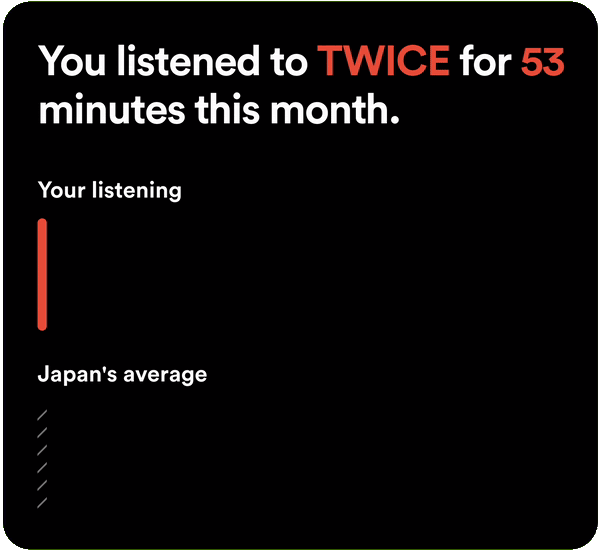
“Knowing that other people listen to music in another way than me would influence what music I choose to listen to”
Listeners would like to be reminded about what songs they listen to — or might have forgotten about. Recommendations also carry a social component — listeners are curious about songs that other fans are listening to.

“Wrapped is too infrequent. How does my listening change over a day? How does it change over seasons? ”
Listeners want more — There is a strong desire to access their ‘fan narrative’ more frequently.
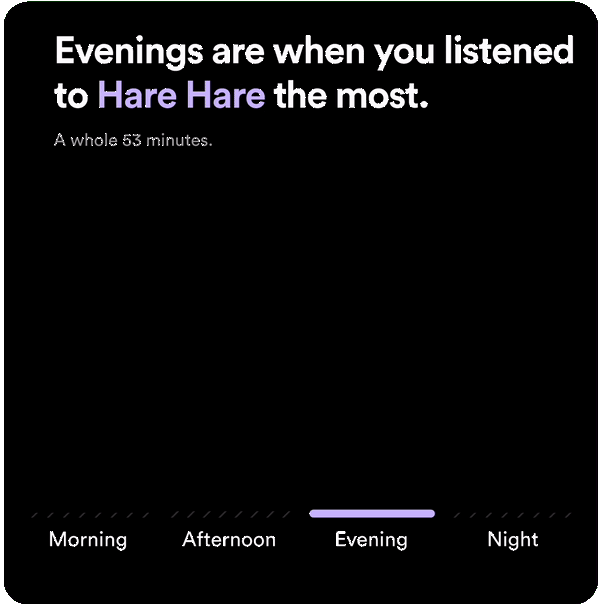
STRATEGY
Creating Data Stories
Compelling data stories require diversity; users are not interested in mere numbers and avoid redundant information. It's crucial to offer a range of content. Presenting data as a simple statement like "they didn't listen much" may come across as confrontational and lacks the power to inspire further action. Our proposal is modular — Emphasize the narrative and exclude elements that don't captivate interest. It allows for a curated set of data stories created for specific users.

SYNTHESIS
Content for Fandom
Developing special content for Japanese fans required us to understand the data we had access to and what would be feasible to curate. We categorised the curation opportunities as the following:
Infrastructure
Collect fan memories in one place, tapping into sentimentality and memorabilia.
Platform Content
Launch an extended version of listening stats that is highly localized and meet local fandom needs
Partnership Integration
By providing exclusive content through partnerships, we can provide value that stretches beyond our platform.

PROCESS
Iteration
While fleshing out the content cards from wireframes, some of the considerations I made were around complexity of visual information, layout and modularity.

Complexity
The individual components had to be simple but memorable. For example, this data story is packed with information — there is a subset of fans, minutes, song that is most listened to, how mainstream that song is, song that is least listened to, how mainstream that song is.
I distilled the content cards to one main takeaway, so the scrolling experience is not overwhelming.

Variation
I explored concepts for simplified aesthetics for a Japanese audience, retaining only the essential information on each data card. I wanted to develop the cards in a manner that they could be flexible in how much space they take up.

Prototyping
To make things scalable, I first organized the data as variables connected them to the components so they auto-populate.
The components were built with variables such as [artist name] and [song title] which pulled directly from the user’s database to make custom prototypes.
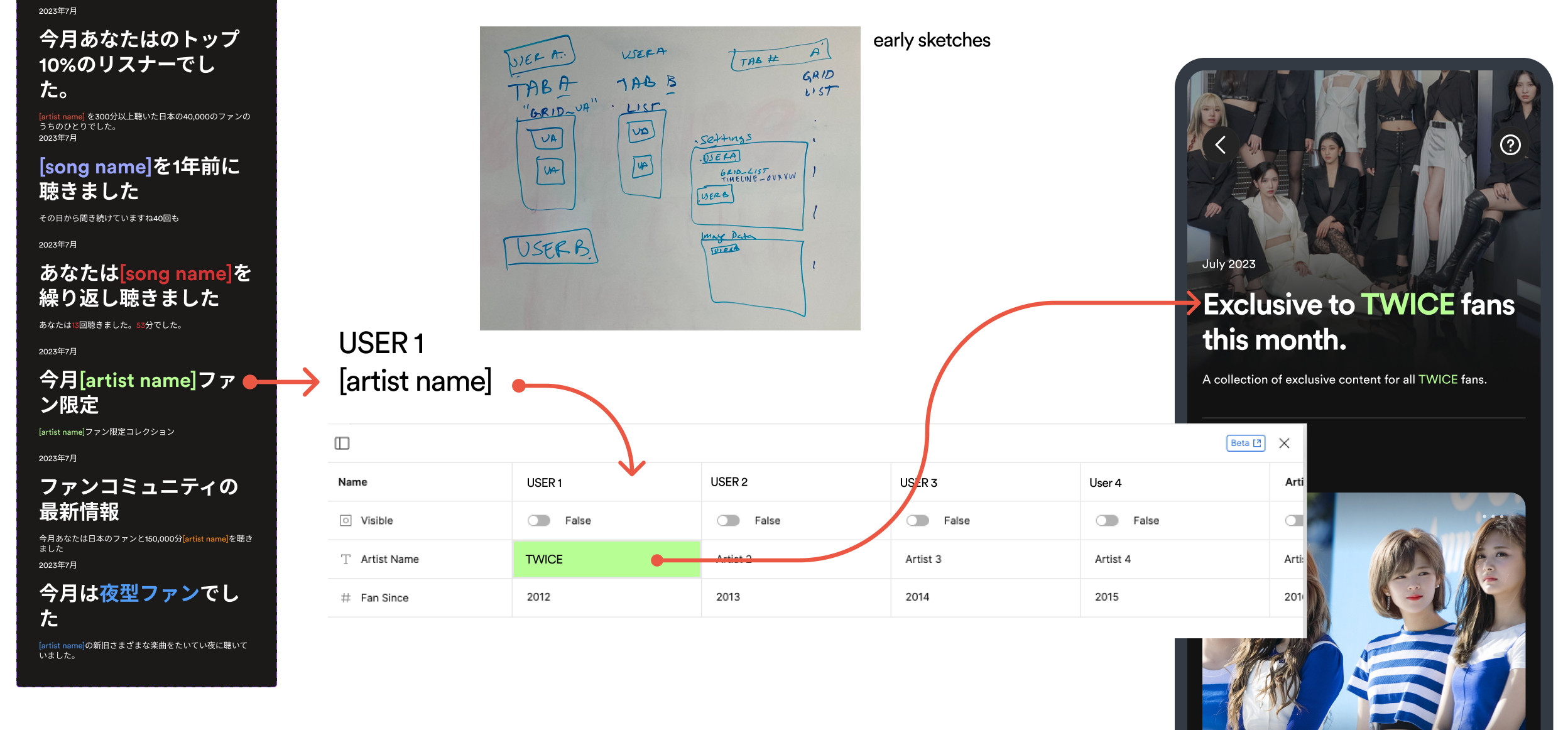
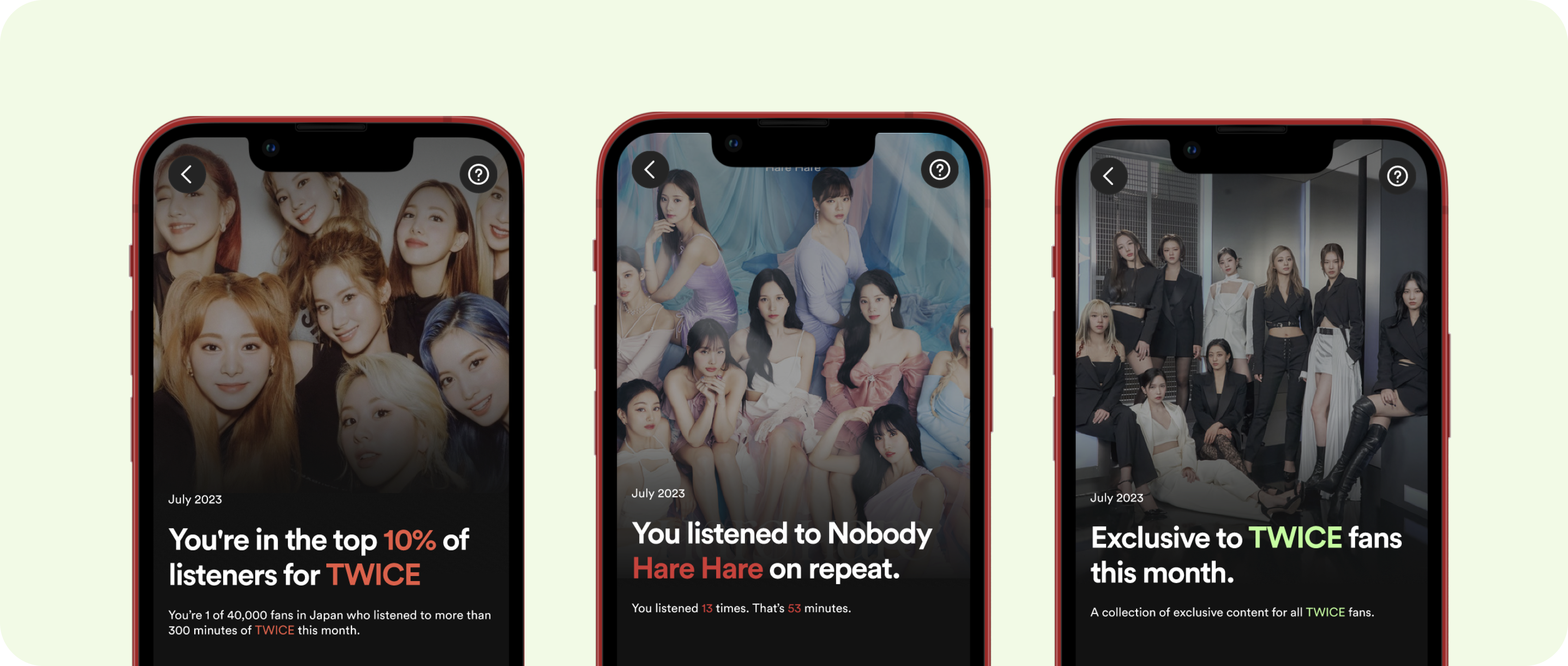
Result
The final prototype met our goal to uncover insights and translate concepts into features that address customer behaviours and motivations.
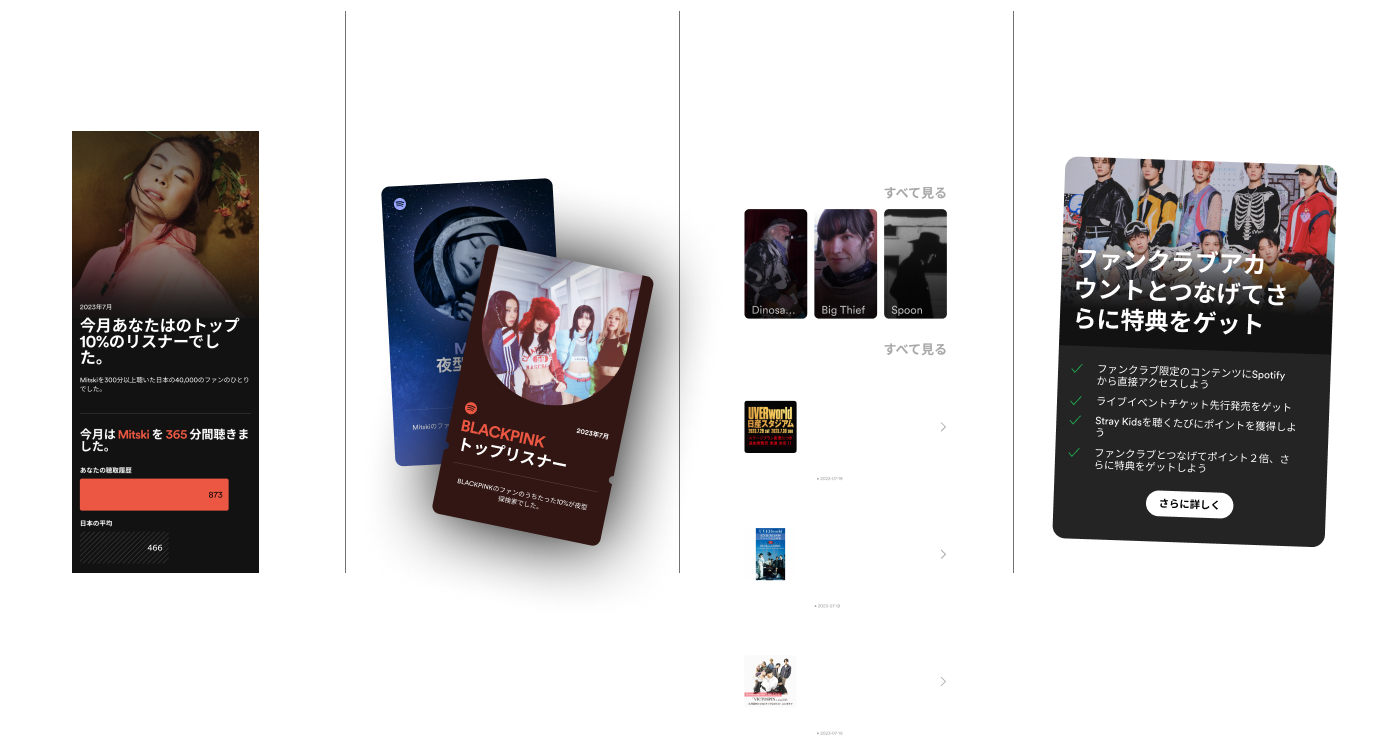
What's Next
The final prototype was tested with 10 Japanese users and received over all positive feedback. It is now under development.
